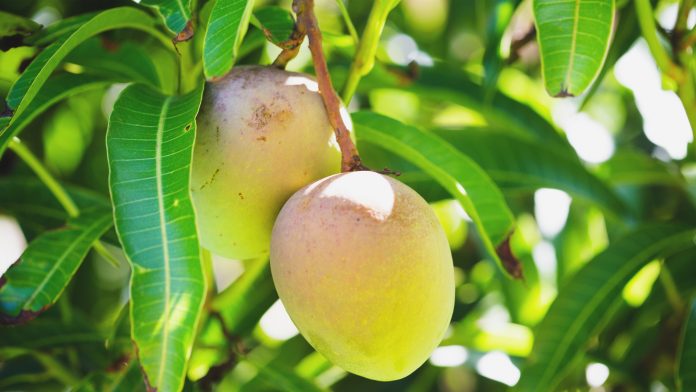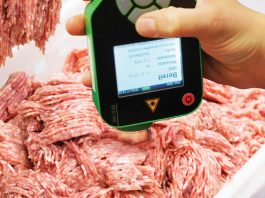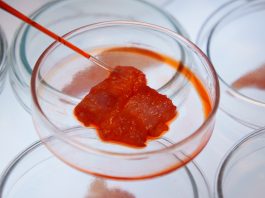Researchers have created a bioplastic comprised of nanofibrillated cellulose and mango leaf in an effort to improve food preservation.
The research team from the University of Cadiz and the University of Aveiro’s Biopol4fun group have developed a bioactive or functionalised plastic made from nanocellulose and mango leaf extracts that preserve food for longer than non-functionalised plastics.
The novel packaging has been developed to preserve the properties of food for a greater period of time without requiring additional chemical additives as the packaging acts as an active barrier favouring preservation.
Developing bioactive packaging
To aid with their findings, the team contrasted two methods for acquiring the packaging. The traditional technique entailed dissolving the components in a subsequently removed solvent.
The second method used did not necessitate chemical solvents but instead utilised supercritical CO2 to functionalise the polymer, which offers the bioplastic more efficient physico-chemical and bioactive properties than those acquired by standard treatment. This technique both prolongs food preservation and plays the role of a barrier against food pathogens.
This bioactive packaging – with antimicrobial and antioxidant properties from mango leaf extract – improves the defensive barrier against ultraviolet light. “Thanks to it, food wrapped in this film could be preserved longer without the addition of preservatives. The film itself replaces the chemical additive since the active substance exerts its effect via the packaging without the need to add anything to the food,” explained Cristina Cejudo, researcher at the University of Cadiz and co-author of the study.
In order to develop the bioplastic, the team utilised leaf extracts utilised from the cultivation of mango from the experimental farm of the Institute of Subtropical and Mediterranean Horticulture ‘La Mayora’ in Malaga. Meanwhile, the nanocellulose used to form the polymer is derived from the chemical and enzymatic treatment of a paper industry waste product.
Supercritical solvent impregnation
Utilising these materials, the group has developed two procedures to contrast their physical properties and bioactive function, as laid out in the study called ‘Biobased films of nanocellulose and mango leaf extract for active food packaging: Supercritical impregnation versus solvent casting’, which has been published in the journal Food Hydrocolloids.
For the traditional casting method, the process employed by the researchers entailed dissolving the mango leaf extract and the nanocellulose and consequently polymerising and drying out the solvents at a temperature of 45ºC.
For the treatment centred on the supercritical impregnation technology, they used an extract formerly acquired by the same method. “By doing so, a better dissolution of the extract is achieved during the impregnation of the polymer, since the mango extract penetrates into the composition of the nanocellulose at the surface level, which favours the migration of the active compounds, thereby taking less time to exert its preservative action,” said Cejudo.
A further benefit of the supercritical method is that the pathogen inhibition is greater as a result of the selection of the most bioactive compounds in mango extract for supercritical impregnation. This provides the plastic with a higher concentration of these compounds than what is offered by the traditional method. “As a result, the active properties of the mango remain intact after impregnation, which increases the film’s ability to protect food,” commented Cejudo.
With the obtainment of these findings, the group has been able to authenticate the efficiency of the supercritical impregnation method to acquire this new bioactive packaging. “This treatment is effective and valid because it helps to preserve food with a more perishable shelf life and also offers the advantage that it can be applied without the use of solvents or artificial chemical compounds,” added Cejudo.
In vitro testing
In order to measure the effectiveness of the novel packaging, the group analysed the antimicrobial performance against two food pathogens: Staphylococcus aureus and Escherichia coli.
With this in vitro testing, the researchers discovered that the mango polyphenols present in the bioactive film avert the spread of both microorganisms due to their antimicrobial properties. “This result shows that the new bioplastic can be used as packaging to inhibit the spread of pathogens and prevent food spoilage,” explained Cejudo.
This new study builds on a study conducted by the researchers last year, in which they set out to design another novel form of packaging using a food plastic to which they added beetroot extract, rich in antioxidant compounds.
Following a preliminary test, they attained a product that intends to enhance the characteristics of the containers currently applied to provide a longer shelf life to the food without losing its properties.
Going forward, the team will examine how this bioactive packaging reacts to preserving specific foods and will analyse its performance at a pilot scale.









